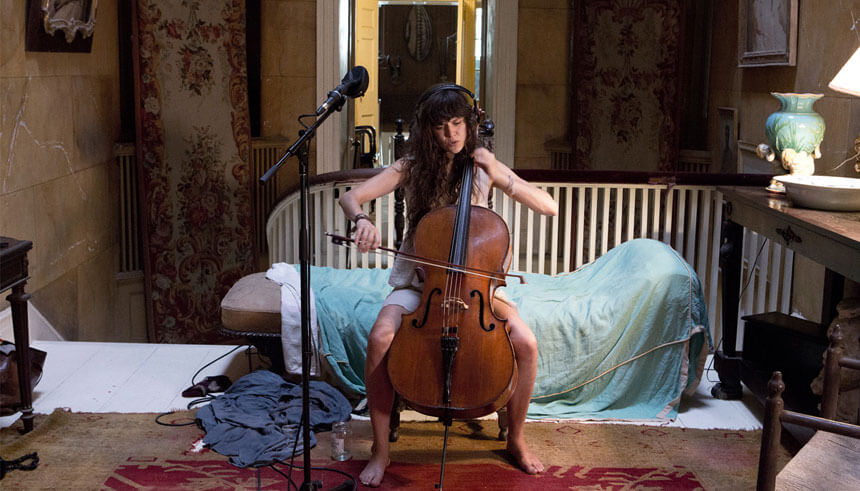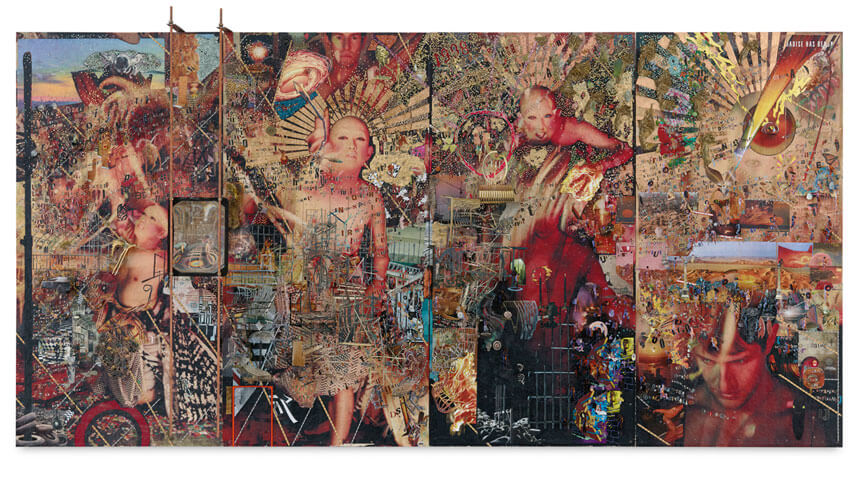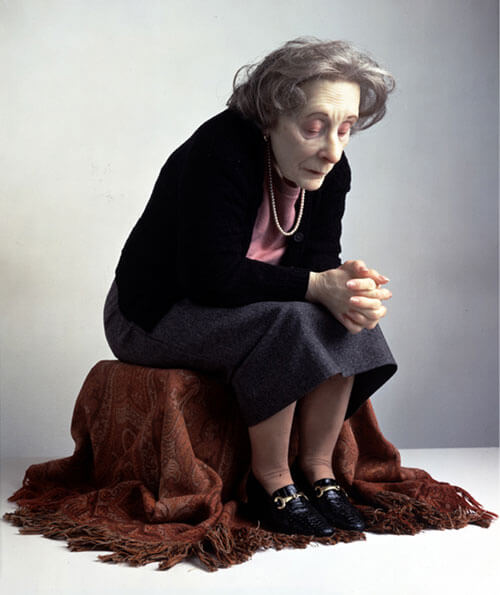East West Lifestyle
Time Captured Through Art: A Journey That Wasn’t
By Angela Bao

The Broad’s new exhibit exploring interpretations of time features pieces never seen before in a museum.
Summer at The Broad in downtown Los Angeles is full of new contemporary art and events that will prompt museum visitors to lose track of time. Their newest exhibition, “A Journey That Wasn’t,” is an examination of how the passage of time is represented in the works of various renowned artists from around the world.
“As we move through the concept of time in the exhibit, we see that time can be measured, on one hand,” says Ed Schad, associate curator at The Broad. “On the other hand, time can be very personal and subjective.”
The exhibit is scheduled to remain on the first floor until February 2019, with support from East West Bank as the museum’s leading partner. “‘A Journey That Wasn’t’ is our third thematic exhibition since we opened,” says Joanne Heyler, founding director of The Broad. “The show focuses on the ways artists from the museum's collection have examined or embedded their work into the concept of time, and our subjective relationship to time’s passage.”
What inspired the theme?
“Actually, The Broad building itself helped inspire the exhibit,” says Schad. “We realized that the museum choreographs and orchestrates a visitor’s experience, and the artwork inside can speed visitors up or slow them down in interesting ways. There was that sense of passage through the building of having someone arrive, take the escalator up, and then cycle down.”
With a theme as elusive as the concept of time, synchronizing unique pieces from a diverse group of artists was a welcome challenge for Schad and assistant curator Sarah Loyer. “We started unpacking the works in the collection and found that a large number of them had…a sense of passage and a sense of time,” says Schad. “So, we started to look at them individually and refine this concept across a number of registers, and that’s really how the show came to be.”
Since opening in 2015, the museum has welcomed more than 2 million visitors from around the world. “That means we’re really close to, or at, capacity every hour for the six days that we’re open, every week,” says Heyler. “We’re just so thrilled to see so much public engagement with the museum.” Much of the museum’s popularity has been attributed to curatorial tastes and the socially relevant art exhibitions, such as Yayoi Kusama’s “Infinity Mirrors,” “Oracle,” and Jasper Johns’s “Something Resembling Truth.”

“When you see this newest installation, you’ll see artists both old and young, veterans and those who are new to our museum collection,” says Schad. “We look for artists who are important internationally and locally in order to show our visitors large selections in the show.”
“A Journey That Wasn’t” also is revealing a number of artists and works that have never been displayed before. “Forty out of the 55 works in the show have never been shown in a museum, and some collection artists are being exhibited for the first time since we opened,” says Heyler. Some of these artists include Gregory Crewdson, Pierre Huyghe, Toba Khedoori and Ron Mueck. “What I happen to love about the exhibition is the way in which these works jar you a bit out of the settled train of thought,” continues Heyler. “We organize concepts that allow for fresh curatorial takes on our collection.”
Transitions
Having a number of artists who use disparate art mediums to narrate a common theme is a difficult task, and the curators took special care to allow viewers to transition from gallery to gallery. “Each one is calibrated in a particular way,” says Schad. “Transition is everything, so ironing that out and getting those little moments of resonance to be smooth and true to the theme took a long time. It was challenging, but we hope it works and we hope people feel it as they walk through the exhibit.”
Visitors are able to navigate the floor plan with ease while absorbing each of the art pieces. For example, Andreas Gursky’s “F1 Boxenstopp,” a series of four digitally altered photographs depicting pit crews from F1 races, allows visitors to stop and examine a scene that typically takes place in mere seconds. “He takes something very fast—the frenetic activity of a pit crew—and slows them down to be almost relatable to something you’d find in a Caravaggio painting,” says Schad. “The frenzied activities of these pit crews almost become slowed down and mannered.”
As visitors continue into the next room, they enter the world of Paul Pfeiffer, who also uses digitally altered media. “Paul has taken NBA videos and stripped them of the advertisements and other players, leaving just a basketball bouncing inside a stadium,” says Schad. “So, you move from a very mannered thing into something that’s been ruptured, and you can see some of the spectacle and the extremity of emotions going on inside these bits. It’s transitions like these that we’re really aiming for through this show.”
Schad and Loyer also have attempted to shine a light on social issues through the theme of time. Marlene Dumas’s painting of Palestinian men lined up against a wall can be interpreted in various ways. “Are the men in group prayer? Or are they in group arrest? That’s up to the visitor to decide,” says Heyler. “Adjacent to that is Goshka Macuga’s fantastical tapestry image of women picnicking around the grave of Karl Marx, which shows interesting juxtapositions.”
The exhibit also taps into emotional elements through the work of Ragnar Kjartansson’s use of music in his immersive video piece, “The Visitors.”
“What better metaphor for the passage of time than music? Not only the musical scores and arrangements themselves, but you also find the same patterns playing out in themes like poetry that use rhythm to play with the concept of moving through space and time,” says Schad.
He continues, “There’s an extraordinarily special moment in the exhibition, where work by Glenn Ligon called 'Warm Broad Glow' uses a passage from Gertrude Stein and applies overtones of racism with his sense of artistry. Taking people through various themes of social issues into how art is made and how art ages over time has been a challenging yet rewarding experience.”
What are some of your favorite pieces in the exhibit?
“Now that it’s fully installed, a really wonderful moment and a piece that’s going to be popular with the public is Ron Mueck’s ‘Seated Woman,’” says Schad. The art piece is a model of an elderly lady who is rendered very realistically, but also very small in size. “It’s really otherworldly to encounter this ordinary figure from our lives and see how he has transformed her through a sense of scale,” says Schad. Similar to Dumas’s painting of the Palestinian men, Schad believes that visitors are able to decide for themselves whether the elderly lady appears tired and lonely, or endearing and meditative.

“Forty out of the 55 works in the show have never been shown in a museum, and some collection artists are being exhibited for the first time since we opened.”
“Another artist who is very special to the collection is Sharon Lockhart,” says Schad. “We have many of her photographs on display that we’re showing for the first time at the museum.” Most of the photographs are of children in a series called “Pine Flats,” which was shot and created in her studio up in the Sierra Nevada Mountains. “Her work is very meditative,” says Schad. “It’s kind of the art world equivalent of yoga, and it takes a great bit of attention for the viewer to understand the real depth of focus and wonder that she builds into every one of these kids.”
What other exciting events are happening at The Broad?
The arrival of summer in Los Angeles always calls for exciting events, musical performances and plays that are open to the public, especially in downtown. “We have an extraordinary Summer Happenings program put together by our audience engagement team and curators,” says Schad. “These Happenings are very important to everything that we do at The Broad, and in a lot of ways, this exhibition is just the beginning.”
Summer Happenings is a series of late-night music, performance and art experiences at the museum that happen monthly from June to September. Featuring contemporary artists from around the world, visitors can enjoy a completely different experience from going to the museum during the day. “I couldn’t be more excited about these programs, and I encourage people to go to our website and take a look at these amazing lineups coming up,” says Schad. The Broad also will be announcing two future exhibits in the coming weeks.
Sign up for the Reach Further Newsletter
We’ll keep you in the know about the latest US-Asia business news and trends.
Suscríbase al boletín Reach Further
Lo mantendremos informado sobre las últimas noticias y tendencias comerciales entre Estados Unidos y China.

